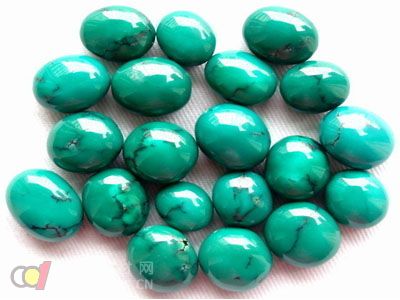Turquoise is a rare and valuable opaque gemstone known for its striking blue color, which results from the presence of copper. It often displays a mix of blue, green, and yellow hues. As the birthstone for December, turquoise symbolizes peace, happiness, and good fortune. High-quality turquoise features a deep blue tone, fine pores, and a uniform color. Pieces with minimal iron streaks are especially prized and hard to find. In recent years, turquoise has gained immense popularity among Tibetans, particularly those with vibrant blue tones. In 2012 alone, the average price of turquoise increased by 10%, while top-tier pieces saw a rise of over 50%. Understanding how to identify genuine turquoise is essential, as there are several common fakes on the market.
How is Fake Turquoise Made?
Turquoise fraud and enhancement techniques have been around for some time. Because turquoise contains water and has porous structures, it tends to lose moisture after being mined, causing it to fade into a lighter green or dark grayish-green. Wiping it with a damp cloth can temporarily restore its original color. Some high-quality pieces undergo surface treatments to stabilize their appearance, and these methods are generally accepted in the international gem industry.

Some imitations and cheap Indian jewelry made from fake turquoise are rough in texture and difficult to repair, sometimes even impossible to fix.
The Enhancement Process Makes It Brighter:
Artificial treatment of turquoise involves two main methods: injection molding and wax impregnation. These processes aim to enhance the stone’s vibrancy and density. Under the previous national standards, both were classified as "treatment" and required disclosure at the time of sale. However, the newly revised standard now recognizes wax treatment as "optimization," meaning it no longer needs to be explicitly mentioned. According to Teacher He, many fake turquoises on the market are glued together. When viewed with the naked eye, they appear dull with unnatural iron lines. Using infrared detection equipment, one can spot internal organic rubber peaks, revealing the artificial nature of the stone.
Magnesite Imitations Are Hard to Detect:
The most common counterfeit material used to mimic turquoise is magnesite, primarily found in Inner Mongolia. This white mineral is often treated with glue and dyes to resemble real turquoise. If clearly labeled as "Imitated Turquoise" during sales, it can still be sold as a handicraft. However, due to its low cost—often just a few dollars for a simple bracelet—some dishonest traders sell it under the name of real turquoise to make large profits. According to Mr. He, magnesite-based imitations are very realistic and challenging to detect without specialized tools like infrared analysis.
CS06A Newly Designed Precision Electric Screwdriver With Palm Rest
SUZHOU CREATION SPACE INTELLIGENT TECHNOLOGY CO.,LTD , https://www.mypkey.com